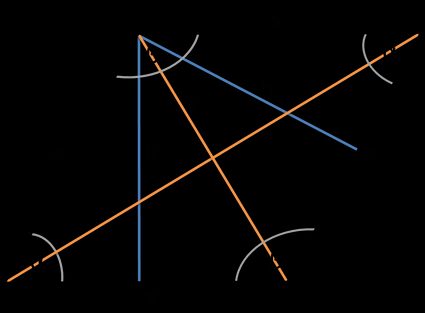Rhombus Area Calculator
The rhombus area calculator is an excellent tool to determine the area of a rhombus, as well as its perimeter and other characteristics: diagonals, angles, side length, and height.
Have a look at many ways you can find the diamond area: given diagonals of a rhombus, using base and height, side, and any chosen angle... Are you still wondering how to find the area of a rhombus or rhombus perimeter? Check the rhombus area formulas below, or just experiment with the tool.
Rhombus and its properties
A rhombus is a simple quadrilateral with all sides equal (see quadrilateral calculator). The other names are an equilateral quadrilateral or a diamond (like the one from playing cards ♢).

The fundamental properties of a rhombus are:
- The two diagonals of a rhombus are perpendicular and bisect each other;
- Its diagonals bisect opposite angles; and
- Opposite angles have equal measure.
Every rhombus is a parallelogram and a kite. So might also be interested in our parallelogram area calculator and the kite area calculator.
Rhombus area formula
There are three useful formulas for the calculation of the area of the rhombus:
-
Knowing base and height:
area = base × height -
Knowing the diagonals of a rhombus:
area = (e × f)/2 -
Knowing the side
sand any (!) angle:area = s² × sin(angle)
Why can we use any angle in the last rhombus area formula? Because we know that two adjacent angles are supplementary, and sin(angle) = sin(180° - angle).
There are other variations of those equations (e.g., calculating the area given height and angle), but they are only simple trigonometric transformations of those three most popular rhombus area formulas.
Rhombus perimeter
Finding the rhombus perimeter is trivial if we know the side length – it's 4 × a. But what if we know only the diagonals of a rhombus? Let's check:
-
We know that diagonals are perpendicular and bisect each other. So the rhombus is nothing else than four congruent triangles, with legs equal to e/2 and f/2.
-
All we need to do is find the hypotenuse of the triangle. You can use here the right triangle calculator or Pythagorean theorem calculator.
-
Multiply by 4 the obtained hypotenuse value. It's your rhombus perimeter!
Also, you can use this formula:
perimeter = 4 × √(e/2)² - (f/2)²)
Or just type the lengths of the diagonals into the rhombus area calculator!
How to find the area of a rhombus?
Are you still pretty unsure how to use the calculator? Let's show its potential with a simple example:
-
Type the first given value you have. Let's assume its side = 10 in.
-
Type the second given value. For example, an angle equal to 30°.
-
Wow! The rhombus area calculator displays all the other values – area, height, perimeter, angle, and diagonals. Impressive, isn't it?
Our tool is really flexible – if it's possible to calculate, it will do it. Usually, two given values are enough. Give it a try!
Is square a rhombus? Or is a rhombus a parallelogram?
The answer is yes to both questions. Every square is a rhombus, as for a rhombus, the only necessary condition is that it needs to have all sides of equal length. As you know perfectly well, a square needs to have all sides equal and all four equal angles so it fulfills the conditions to be a rhombus.
Similarly, a rhombus is a parallelogram, as any shape needs to have two pairs of parallel sides to be a parallelogram – and the rhombus has them. So the rhombus is always a parallelogram, but a parallelogram is a rhombus only in a special case – for a parallelogram with four sides of equal length.
FAQs
How to find the area of a rhombus with its given sides?
To find the area of a rhombus, you need both its side length s and any one angle α:
-
Multiply the side length by itself to obtain its square:
s × s = s² -
Multiply this with the sine of the angle α to obtain
A, the area of the rhombus:A = s² × sin(α) -
Verify the result using our rhombus area calculator.
How do I find the area of a rhombus with its diagonals?
Finding the area of a rhombus from its diagonals e and f is easy:
-
Multiply the diagonal lengths
eandf:e × f -
Divide the result by
2to obtainA, the area of the rhombus:A = (e × f) / 2 -
Verify the result using our rhombus area calculator.
How do you find the area of a rhombus with one diagonal and perimeter?
Finding the area of a rhombus from its diagonal e and perimeter p is a little tricky:
-
Multiply the perimeter with itself and divide it by
4:(p × p) / 4 = p² / 4 -
Subtract the square of the diagonal length
efrom this result:(p² / 4) - e² -
Take the square root of this value to obtain the other diagonal
f:f = √[(p²/4) - e²] -
Multiply the two diagonals and divide the result by
2to obtain the rhombus's area:A = (e × f)/2
What is the area of a rhombus with diagonals of 8 and 10?
The area of a rhombus whose diagonals are 8 and 10 feet is 40 square feet. To find this answer, follow these steps:
-
Multiply the diagonal lengths, which are 8 feet and 10 feet:
8 × 10 = 80 ft² -
Divide the result by
2to obtainA, the area of the rhombus:A = 80/2 = 40 ft² -
Verify the result using our rhombus area calculator.
